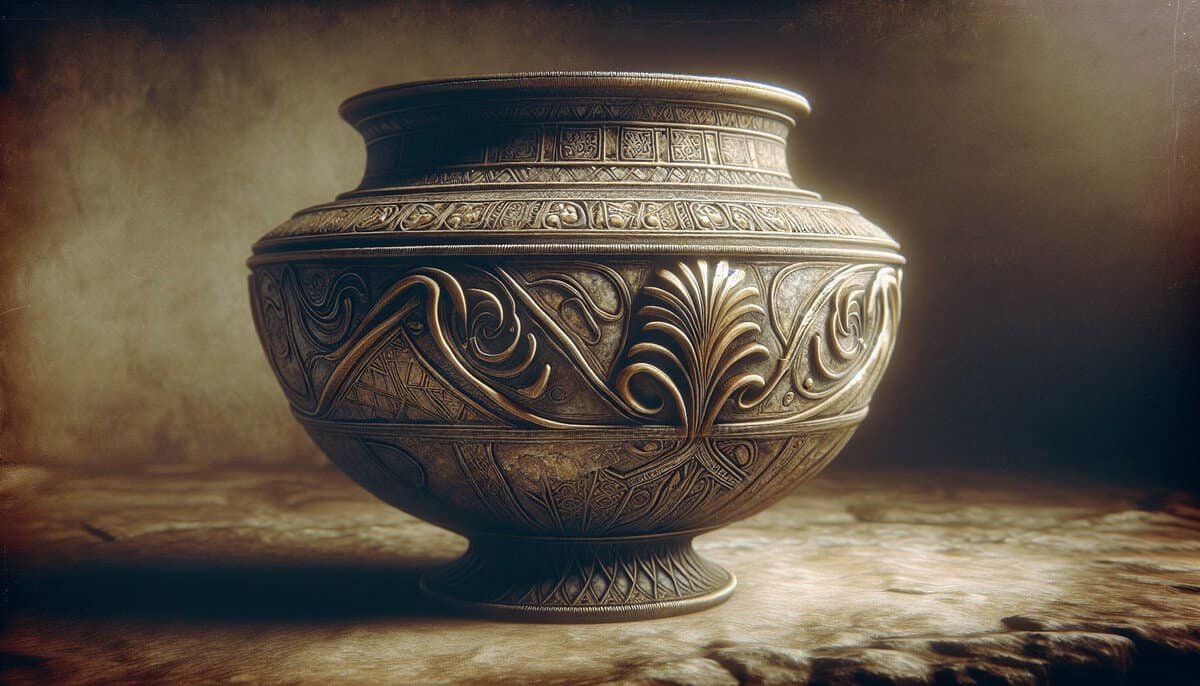Have you ever wondered how ancient artifacts can reshape our understanding of history, faith, and identity? The past holds a treasure trove of secrets, each whispering tales of redemption and loss. As you delve into the intricate narrative of the “Hidden Channel Vessel,” you’ll discover how this artifact connects to broader themes within Israel’s narrative of redemption.
The Discovery of the Hidden Channel Vessel
The Hidden Channel Vessel is not just an object; it’s a bridge to the ancient world. Discovered near the shores of the Dead Sea, this fascinating vessel offers a glimpse into historical practices and beliefs that were pivotal to the region. Archaeologists stumbled upon it during excavations aimed at uncovering remnants of ancient settlements. The vessel’s design and purpose sparked debates among scholars, primarily surrounding its use and significance in ceremonial or everyday practices.
The Significance of the Dead Sea Region
As you consider the importance of the Dead Sea region, it’s impossible to overlook its role in biblical narratives. Known for its extreme salinity and mineral-rich mud, this area has drawn attention for centuries, not just for its natural properties but also for its historical importance. The proximity to ancient trade routes and significant cities made it a cultural melting pot. Within this context, the Hidden Channel Vessel takes on a riveting significance, resonating with narratives of redemption.
Contextualizing the Vessel Within Biblical Archaeology
When you look at the Hidden Channel Vessel, it’s imperative to situate it within the broader scope of biblical archaeology. This domain combines textual analysis with tangible evidence from excavations, offering a comprehensive understanding of the ancient world. The study of such artifacts, including the Dead Sea Scrolls and remnants from biblical events, fosters a deeper connection to the roots of faith and identity.
The Design and Function of the Hidden Channel Vessel
In examining the design of the Hidden Channel Vessel, you’ll find it intricately crafted with a unique channel that runs along its structure. This channel has sparked intense discussions among archaeologists and historians about its intended use. While some propose it was designed for ritualistic purposes, others speculate it might have served practical functions like storage.
Ritual vs. Practical: A Historical Debate
The debate over the vessel’s use reflects a broader tension in the study of archaeology. Was it merely a functional item of daily life, or did it serve a grander purpose related to religious practices? The ceremonial versus practical dichotomy presents challenges in interpretation. You’ll find that many archaeologists take a more nuanced approach, suggesting that ordinary objects can hold significant cultural and spiritual meaning.
Iconography and Symbolism
One of the most intriguing aspects of the Hidden Channel Vessel is its iconographic details. According to some experts, these visual elements could signify themes of purification and renewal, aligning with tenets of faith that advocate for redemption. Such symbolism fuels your understanding of how ancient peoples expressed their beliefs through craftsmanship.

Historical Records: Connecting the Dots
In addition to archaeological evidence, historical records enhance our understanding of the Hidden Channel Vessel. Ancient texts form a crucial part of the narrative, offering context and depth to your exploration. They not only provide insights into daily life but also reflect the religious and cultural sentiments of the times.
The Role of Textual Sources
You might find it fascinating that the Hebrew Bible holds considerable insights relevant to this discussion. References to vessels used in religious settings and in personal rituals abound, painting a vivid picture of the spiritual importance of such objects. This connection between the artifact and biblical texts emphasizes the continuity of the themes of redemption threaded through Israel’s history.
Influential Scholars and Their Perspectives
Throughout history, various scholars have contributed significantly to the understanding of artifacts like the Hidden Channel Vessel. Figures such as William F. Albright, known for his robust archaeological work in the region, have laid the groundwork for modern interpretations. By examining their perspectives, you gain valuable context that enriches your understanding of the vessel and its implications.
Unpacking Redemption: Cultural Significance
Redemption is a powerful theme in both historical and modern contexts. The Hidden Channel Vessel doesn’t just represent an archaeological find; it embodies cultural narratives that resonate even today. To grasp the essence of redemption, you must consider its multiple layers, encompassing spiritual, societal, and personal dimensions.
Biblical Perspectives on Redemption
In the realm of spirituality, the concept of redemption permeates various biblical texts. From the Exodus narrative to prophetic literature, themes of liberation and restoration are prevalent. You can see how the Hidden Channel Vessel plays into this narrative, speaking to a collective longing for redemption throughout history.
Modern Interpretations and Reflections
As you reflect on the meanings surrounding the Hidden Channel Vessel, consider how these narratives translate into modern experiences. Redemption is not merely an ancient concept; it resonates in today’s world, prompting individuals and communities to seek renewal amid adversity.

Archaeological Methodologies: Unearthing Insights
Understanding how archaeologists approach excavations can give you a deeper appreciation of the Hidden Channel Vessel’s context. Modern methods involve a blend of traditional techniques and technological advancements, allowing for a more precise analysis of artifacts.
Excavation Techniques
You might be intrigued to learn about the meticulous processes involved in excavating ancient sites. Archaeologists employ stratigraphy, the study of layers of soil, to uncover the timeline of human activity. This methodology is crucial in placing the Hidden Channel Vessel within its historical context.
Advanced Technologies in Archaeology
The introduction of technologies such as ground-penetrating radar and 3D scanning has revolutionized archaeological research. These approaches enhance your understanding by providing detailed insights without invasive digging, preserving the integrity of the site.
The Broader Context of Redemption in Artifacts
The narrative of redemption is not limited to a single artifact; it extends across numerous archaeological discoveries. The Hidden Channel Vessel stands as a testament to a much larger story of hope and renewal found in tangible remnants of the past.
Comparative Artifacts
As you consider the significance of the Hidden Channel Vessel, look at other artifacts from the same period. Items such as ritualistic pottery and incense burners also speak to themes of redemption and sacrifice, creating a rich tapestry of cultural expression. Each piece contributes to a more intricate understanding of ancient beliefs.
The Role of Museums and Exhibitions
Visiting museums that showcase such artifacts allows you to engage with history on a personal level. The exhibition of items like the Hidden Channel Vessel enables you to confront the past, fostering a sense of connection that transcends time. Many institutions now take a holistic approach, focusing on narratives like redemption to provide audiences with a richer experience.
Conclusion: Tying Ancient Narratives to Modern Perspectives
In wrapping up your journey through the Hidden Channel Vessel, you should appreciate how this seemingly simple artifact reveals profound truths about identity and spirituality. It serves as a reminder that history is not merely a collection of events; it’s a living narrative that continues to shape individual lives and cultures.
The Enduring Legacy of Redemption
The theme of redemption remains relevant in today’s world, resonating through personal struggles and broader societal issues. By reflecting on the past, you can glean insights that inform your understanding of the present. The Hidden Channel Vessel not only enriches the archaeological record but also invites you to contemplate the ideals of renewal and hope.
As you step back from the intricate details surrounding this artifact, it’s clear: redemption is a narrative woven into the fabric of human experience, and the Hidden Channel Vessel serves as a poignant reminder of our shared history.



